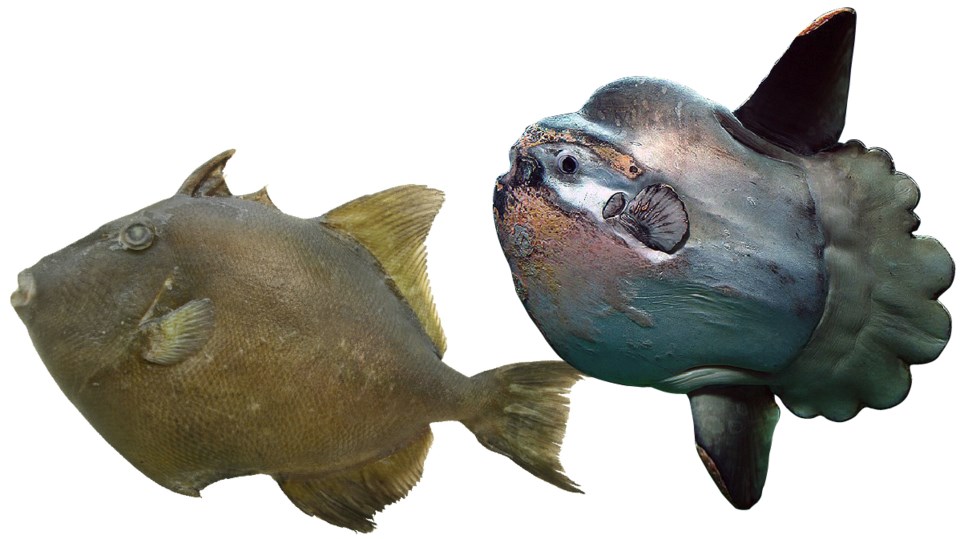Tropical fish continue to be spotted off Vancouver Island and scientists say a warm patch of ocean known as “the blob” is to blame.
Ocean sunfish, butterfish and tuna are just some of the marine species that have moved beyond their usual habitats into B.C. waters, said Ian Perry, a research scientist with Fisheries and Oceans Canada.
And while some of those species have appeared in past warm years, others are making their debut.
The finescale triggerfish, which typically spends time in coral and rocky reefs, was recorded for the first time in B.C. waters last fall, according to the Royal B.C. Museum.
“That’s what we call a first record or an unusual something that hasn’t been seen,” Perry said.
Gavin Hanke, the museum’s curator of vertebrate zoology, said the specimen was healthy when it was found near Brooks Peninsula on the northern Island.
“It was perfectly happy and surviving here, from the account of its collection,” Hanke said.
On Sunday, a lighthouse keeper came across a dead ocean sunfish that washed ashore on north Vancouver Island, Global B.C. reported.
While it would have been alarming to find the tropical species — a docile fish that can grow to 14 feet and nearly 5,000 pounds — it isn’t unprecedented off the west coast of Vancouver Island, Perry said. More unusual is that another was found near Bella Bella last week, having moved even further north into Queen Charlotte Sound.
Hanke, however, said ocean sunfish have been recorded regularly as far north as Alaska.
Richard Dewey, associate director of science services for Ocean Networks Canada, said spikes in the number of ocean sunfish in B.C. waters were also recorded in 2005 and 1977-78.
“When we do have warmer water conditions, we tend to see the low-latitude warmer water species move up to B.C.,” Dewey said.
There’s a consequence for native species, he said. Mackerel moving into B.C. waters, for example, are consuming juvenile salmon and also competing with adult spring salmon for herring.
Dewey said the northward movement of tropical fish is associated with “the blob,” an enormous patch of water up to 3 C warmer than average that appeared in the northern Pacific a year and a half ago.
Researchers are watching the blob, as it continues to change shape.
“The blob is now split. It was a bull’s-eye a year and a half ago in the Gulf of Alaska and it has gradually evolved. In the last few months, it split into two pools of warm water — one off Baja California and the other west of us and Washington state,” Dewey said.
“With the appearance of El Nino, we’re asking what do we think will happen next?”
Among the options: The interaction between the blob and El Niño could result in a net warming of the North Pacific or kick the ocean back to “normal” conditions, he said.
“These are not things that will happen quickly. It will be over next fall and winter. If it merges with or modifies the warm Pacific blob, that will be interesting to watch.”



